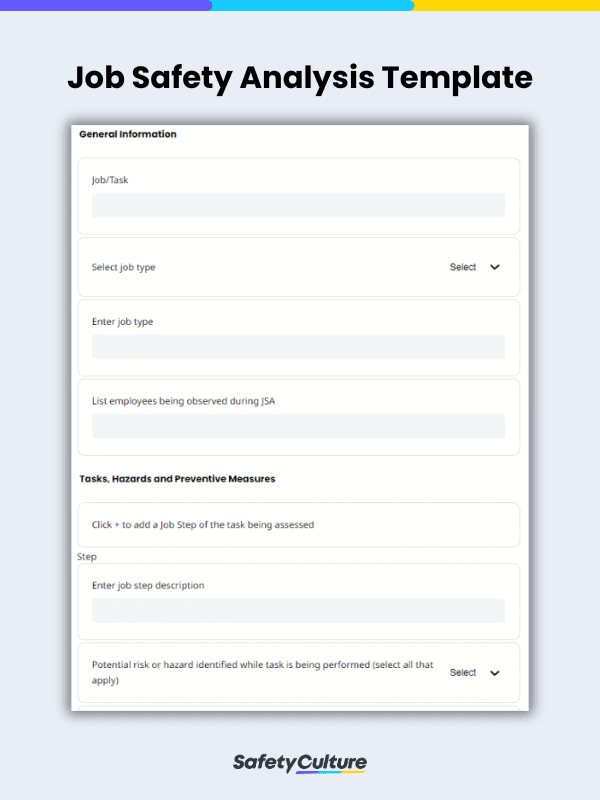JSA Template
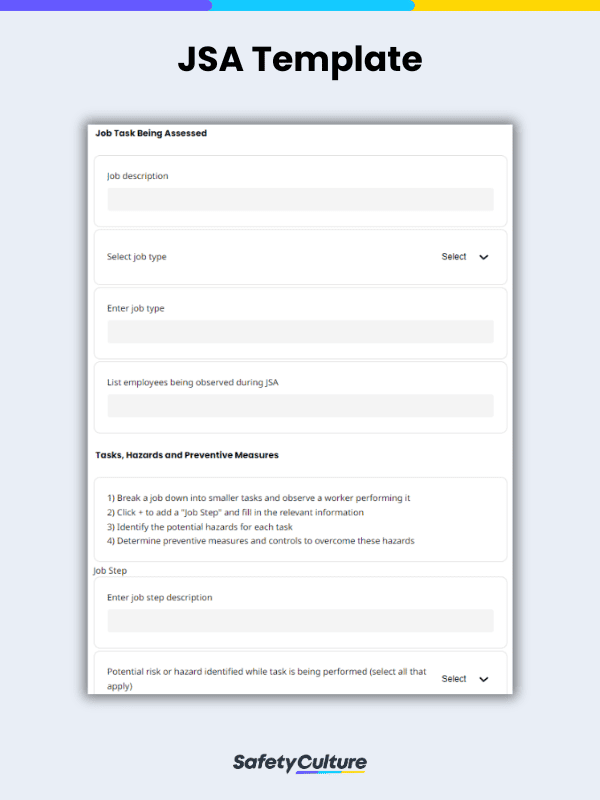
By conducting a JSA, employers can improve workplace safety and protect the well-being of their workers. It is also considered an essential tool for promoting a culture of safety and preventing accidents in the workplace.
With this JSA Template, you’ll be able to do the following:
- Specify the job being assessed and describe its nature
- Select the potential hazards associated with the job using a dropdown menu or input manually if it’s not yet included
- Rate the hazards according to their level of risk
- Identify control measures to address the hazards
- Add recommendations from the health and safety committee
Job Hazard Analysis Form
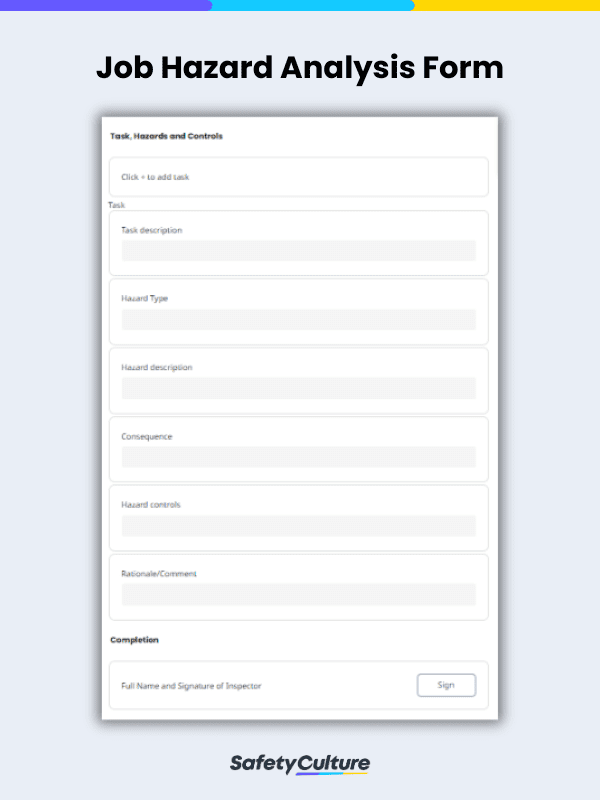
Job Hazard Analysis (JHA) is a process used to identify potential hazards associated with a specific job or task. The primary purpose of conducting a JHA is to prevent accidents, injuries, and illnesses by recognizing and mitigating workplace hazards. Here is an overview of the key aspects involved in performing a JHA:
Safety officers and other authorized personnel can use this Job Hazard Analysis Form as a guide to ensure safety before doing risky activities. With this, you can do the following:
- List the work processes being performed and identify hazards associated with them.
- State preventive measures and controls to reduce, control, or eliminate the hazards.
- Write a rationale to substantiate better action plans to be taken.
Job Task Analysis Template
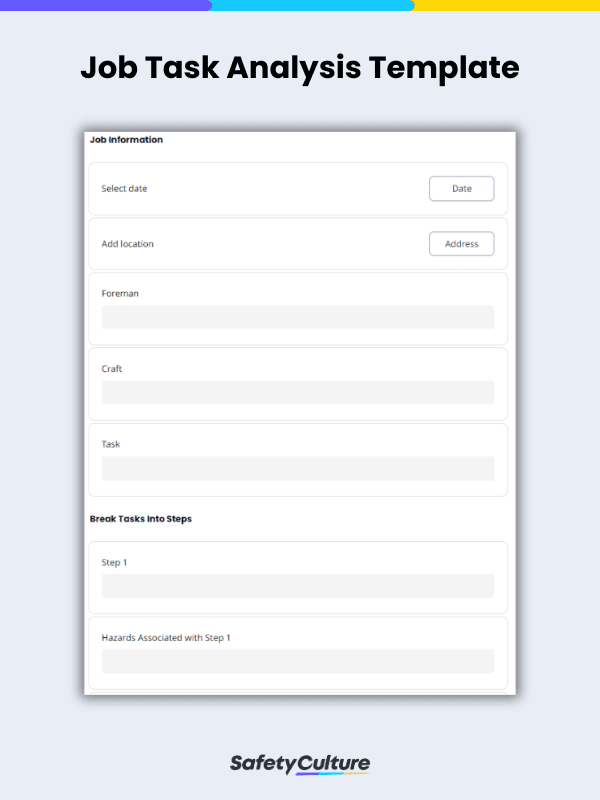
Job Task Analysis (JTA) is a systematic process used to identify and document the specific tasks, knowledge, skills, and abilities required to perform a job successfully. It focuses on breaking down a job into its tasks to gain a comprehensive understanding of the job requirements.
Use this Job Task Analysis Template to do the following:
- Essential information about the job such as the date, location, people involved, and the task itself
- Break tasks down into a step-by-step guide so it’s easier to follow
- State the PPEs needed (if any), and specify the hazards associated with each of the steps
- Go through a couple of job site reminders to make sure that nothing is amiss
- Gather the signatures of all the employees involved
Hazard Identification Form
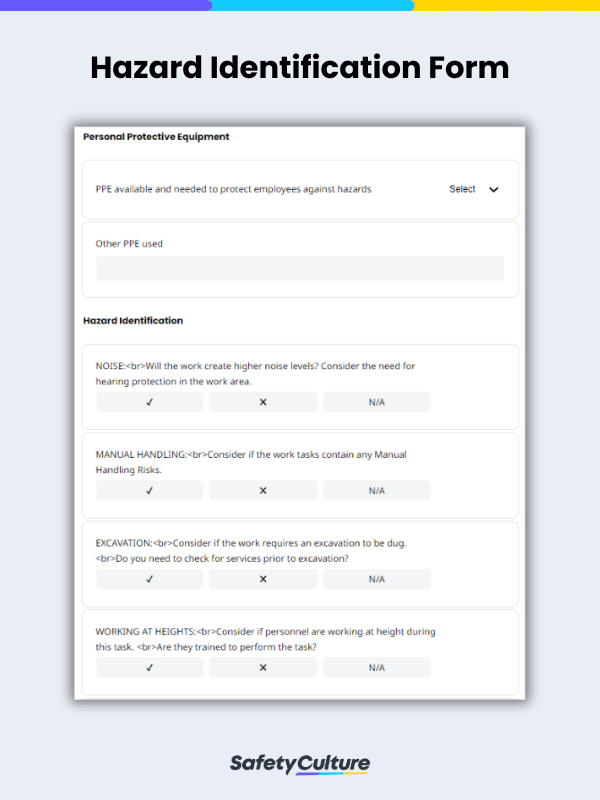
Hazard identification is the process of recognizing and documenting potential hazards in the workplace that could cause harm or injury to people, property, or the environment. It is a critical step in ensuring a safe working environment. Here are the key points to understand about hazard identification:
With this Hazard Identification Form, efficiently do the following:
- Assess potential risks in a workplace or a job.
- Specify the PPE requirements to protect employees from harm.
- Determine the actual hazards present and consider all factors in an activity such as noise, excavation, and working at heights, among others.
- Add recommendations based on the observations, then assess if the workplace or job is safe or not.
Job Risk Assessment Template
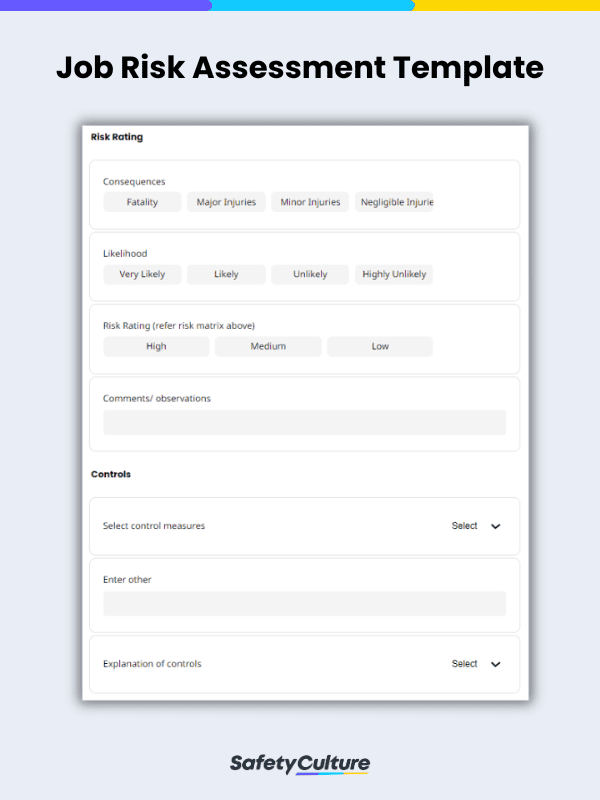
Job Risk Assessment, also known as Job Risk Analysis is a tool used to evaluate the risks associated with a specific job or task. It involves identifying potential hazards and assessing the likelihood and severity of harm that could occur.
Use this Job Risk Assessment Template to do the following:
- Specify each hazard and describe them
- Rate the risks based on consequences and likelihood
- Add other comments or observations
- Select control measures to resolve or minimize the hazard
- Complete the risk assessment by adding further recommendations and necessary signatures
Construction Risk Assessment Form
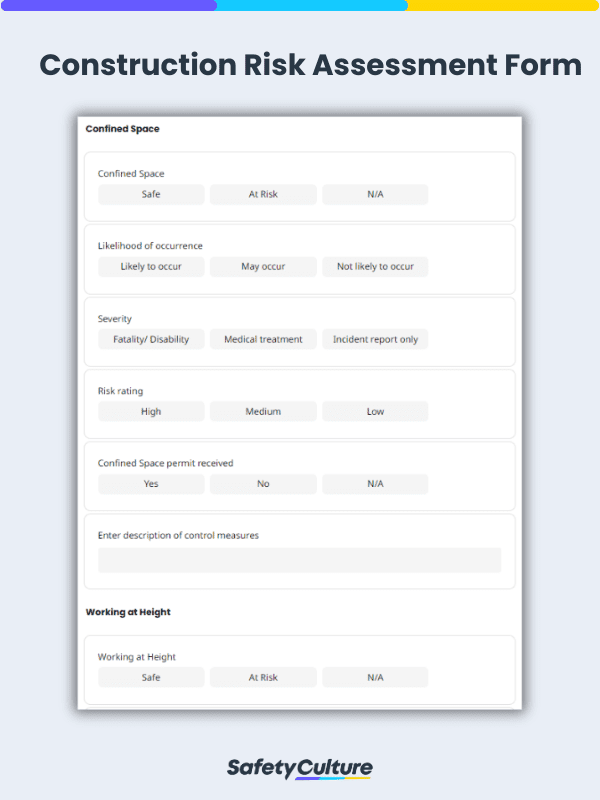
By conducting a comprehensive construction risk assessment, project stakeholders can proactively identify and manage risks, create a safer working environment, and ensure the successful and timely completion of construction projects while minimizing potential losses and disruptions.
Safety officers can use this Construction Risk Assessment Template to determine which construction tasks are risky or prone to hazard. This also gives you a list of potential areas to be on the lookout for such as confined spaces, working at heights, restricted access, electricity issues, compressed air, slippery surfaces, hazardous gases, and asbestos, among others—making it easier to address them. Confirm if the needed work is completed and it is safe to proceed.
Jaydee Reyes

